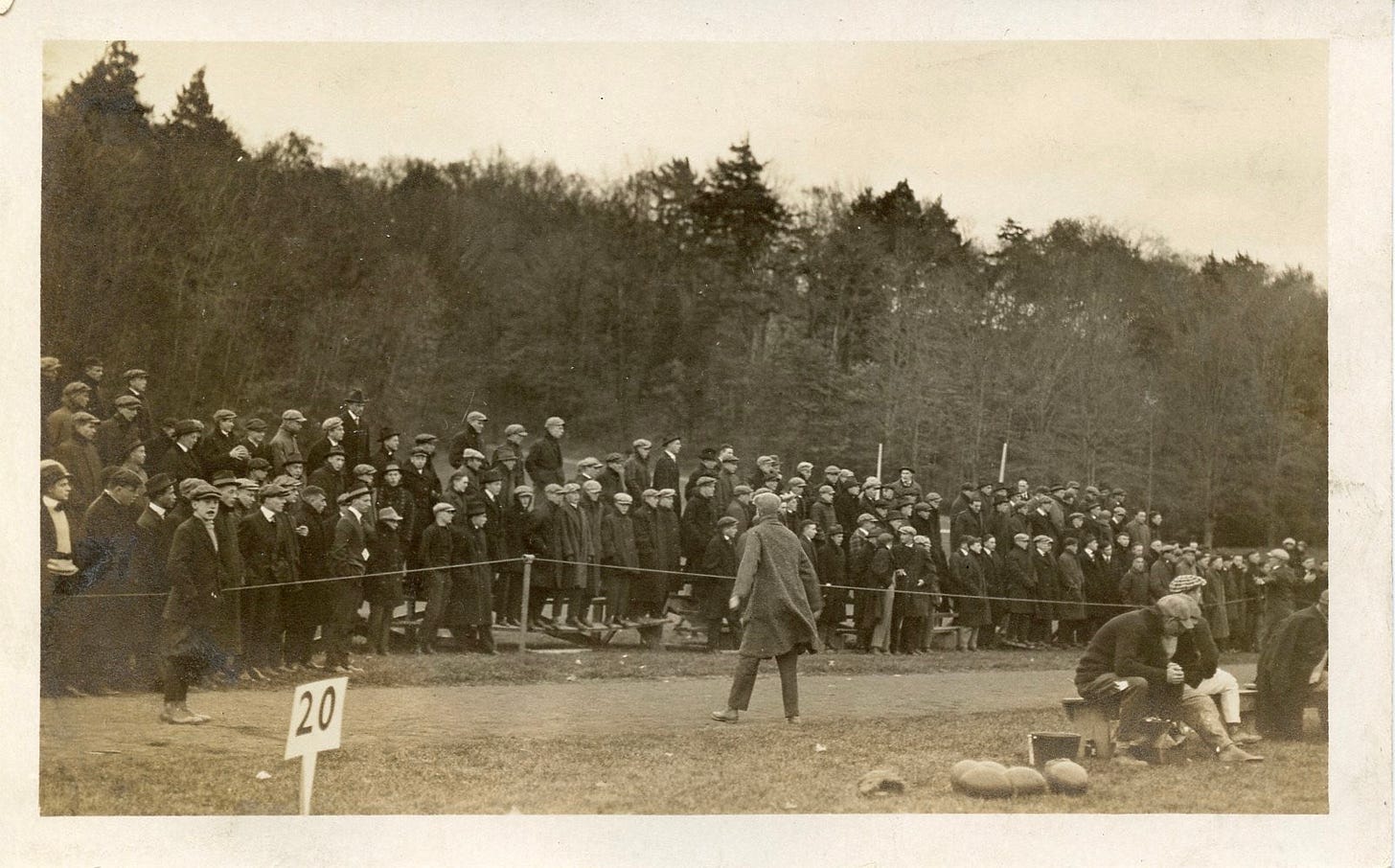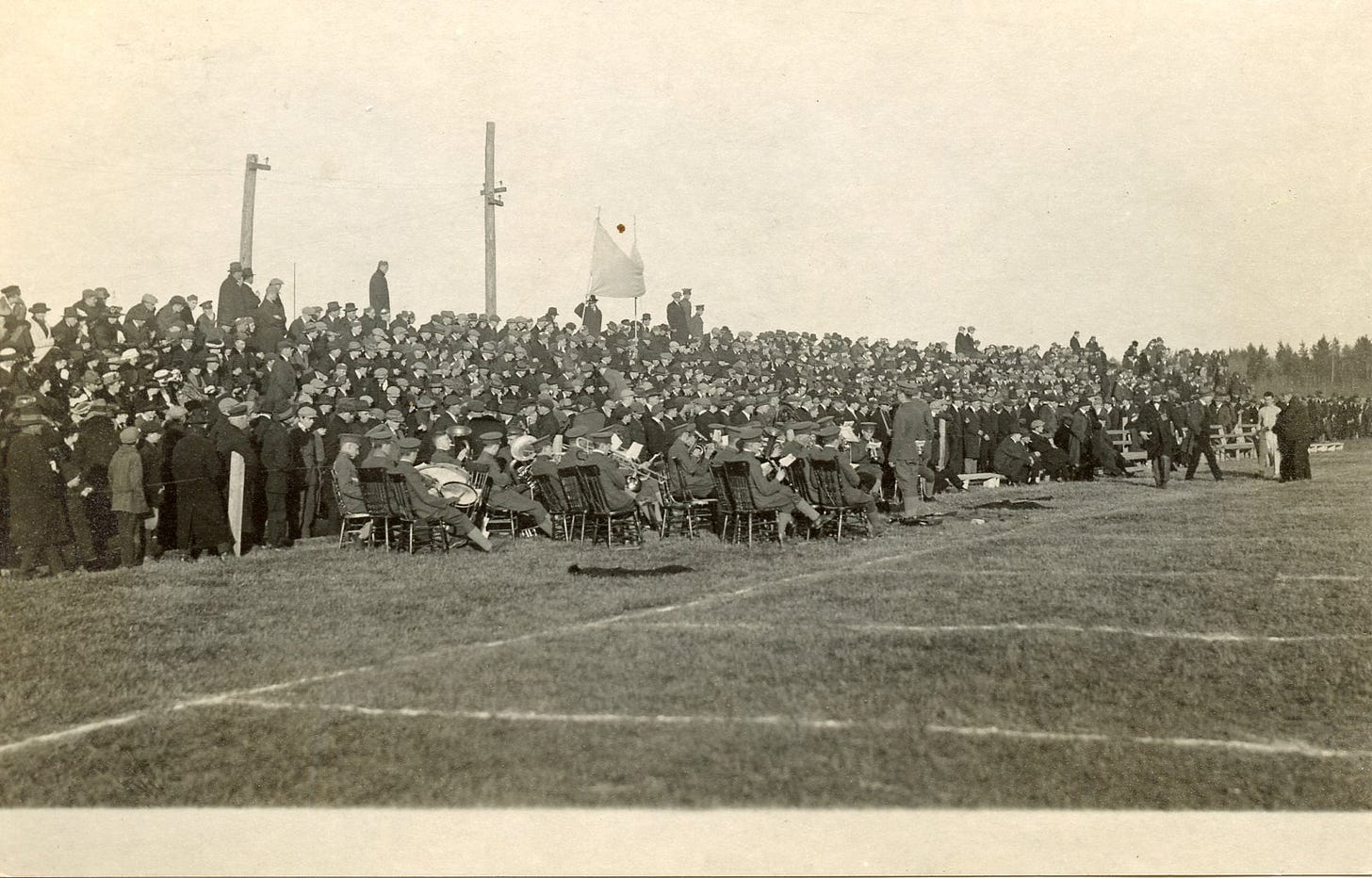Today's Tidbit... When Balls Fumbled Out Of Bounds Remained Live
When the Intercollegiate Football Association (IFA) adopted the game's first formal rules in 1876, they adopted rugby's rules with only a few minor changes. Among the rules that are now quite different from the original was that the ball remained live when it went out of bounds, or "in touch" under the terminology of the times. Just as touchdowns counted only when a player touched the ball down behind the opponent's goal, a ball that went out of bounds was dead only after a player from either side touched it down.
Since balls fumbled out of bounds were live, players sometimes scrambled over benches and water buckets or went into the stands or beyond the ropes to retrieve balls. Players generally did not face out-of-bounds obstacles in formal stadiums or where fans stood behind ropes a sufficient distance from the playing field.


Of course, not every school maintained such order. Smaller schools and a few bigger ones allowed fans to stand close to the sideline on some portions of the field. Others allowed fans to park their cars close to the sideline where the ball could roll under or bounce into vehicles with their tops down.


However, my favorite image of obstacles along the sideline potentially interfering with play shows twenty-five University of Maine marching band members seated along the sideline, with one clarinetist within a yard of the sideline. Although the photo could be from before a game or at halftime, most fans appear to be looking to their left watching action on the field.
Although players still run into people or obstacles along the sideline, they no longer do so while trying to gain possession of the ball. Beginning in 1926, possession went to the last player touching the ball before it went out of bounds. The rule later changed to the last player or team possessing the ball before it went out of bounds.
Football Archaeology is reader-supported. Click here to buy one of my books or otherwise support the site.




